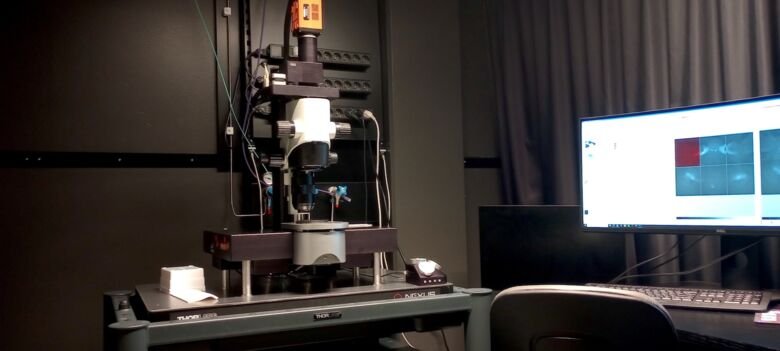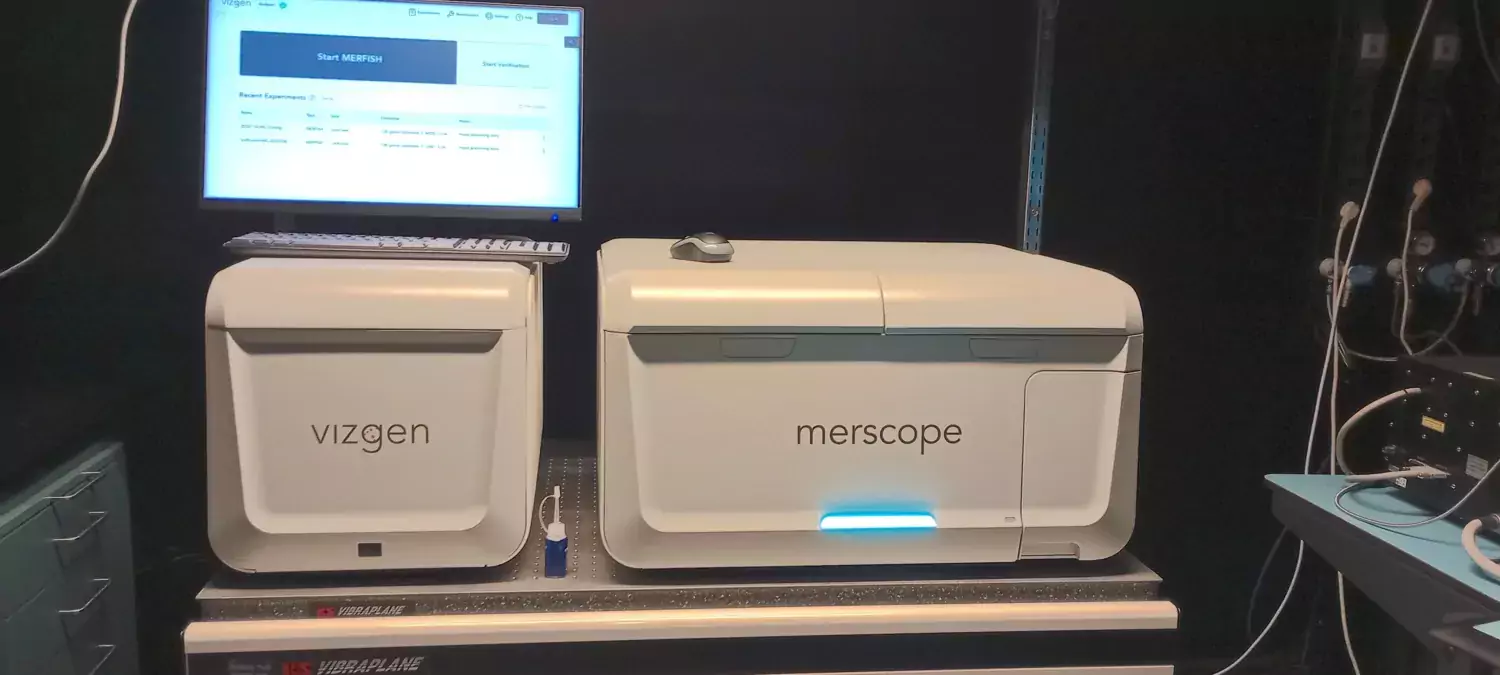Specialized Microscopy Systems at BIC
The BIC facility has several specialized microscopy systems that are optimized for various applications.

LaVision Light-Sheet Microscope
The light-sheet microscope from LaVision Biotech (UltraMicroscope II) is for whole tissue imaging using cleared transparent tissue. The microscope is optimized for organic solvent-based clearing methods such as 3DISCO (iDisco).
Specifications
- Laser lines (nm): 405, 488, 561, 639, 785
- Objectives: 2X with 0.63X to 6.3X adjustment (total magnification is 1.26X to 12.6X), WD = approximately 5.6 mm
- Extra: Tiling and Dynamic horizontal focus. For long working distance objectives (1.1X, 4X, 12X), please contact the BIC facility
- Software: ImSpector and TeraStitcher for stitching

Vizgen MERSCOPE Spatial transcriptomics
MERSCOPE from Vizgen is a specialized imaging system designed for spatial transcriptomics imaging, driven by MERFISH (Multiplexed Error-Robust Fluorescence in situ Hybridization) technology. MERFISH technology is built upon an RNA imaging-based technique called single molecule FISH and combinatorial barcoding scheme. This technique identifies nucleic acids in their native tissue environment with sub-cellular resolution.
To utilize MERSCOPE, you need to order a gene panel from Vizgen, choosing from pre-designed or custom panels for 140, 300, 500 or 1000 genes, depending on your research needs. The current MERSCOPE offer predesigned gene panels for both mouse and human species. For other species, custom design panel is required. Compatible tissue is fresh or fixed frozen sections, cell cultures, and FFPE samples prepared on specialized Vizgen slides.
The instrument training and booking can be done by mail bic@ki.se. We offer training using the MERSCOPE Sample Verification Kit for mouse or human tissue. The training can be done with your samples or our practice sample. Please note that the sample must be mounted on Vizgen slides, the sections mounted on common slide glass are not compatible.
We strongly recommend reaching out to us before placing an order for a gene panel to ensure the instrument’s availability at the time you prefer. Each instrument run is time-consuming, and we cannot guarantee time slots on the instrument unless we are informed about your planned experiment in advance.
For all questions, please contact bic@ki.se.
